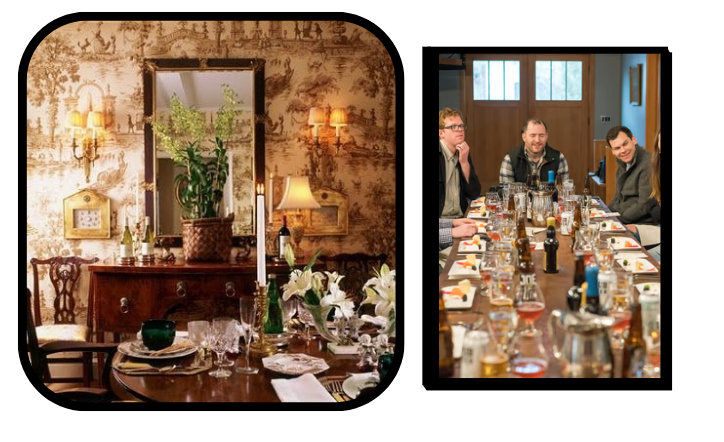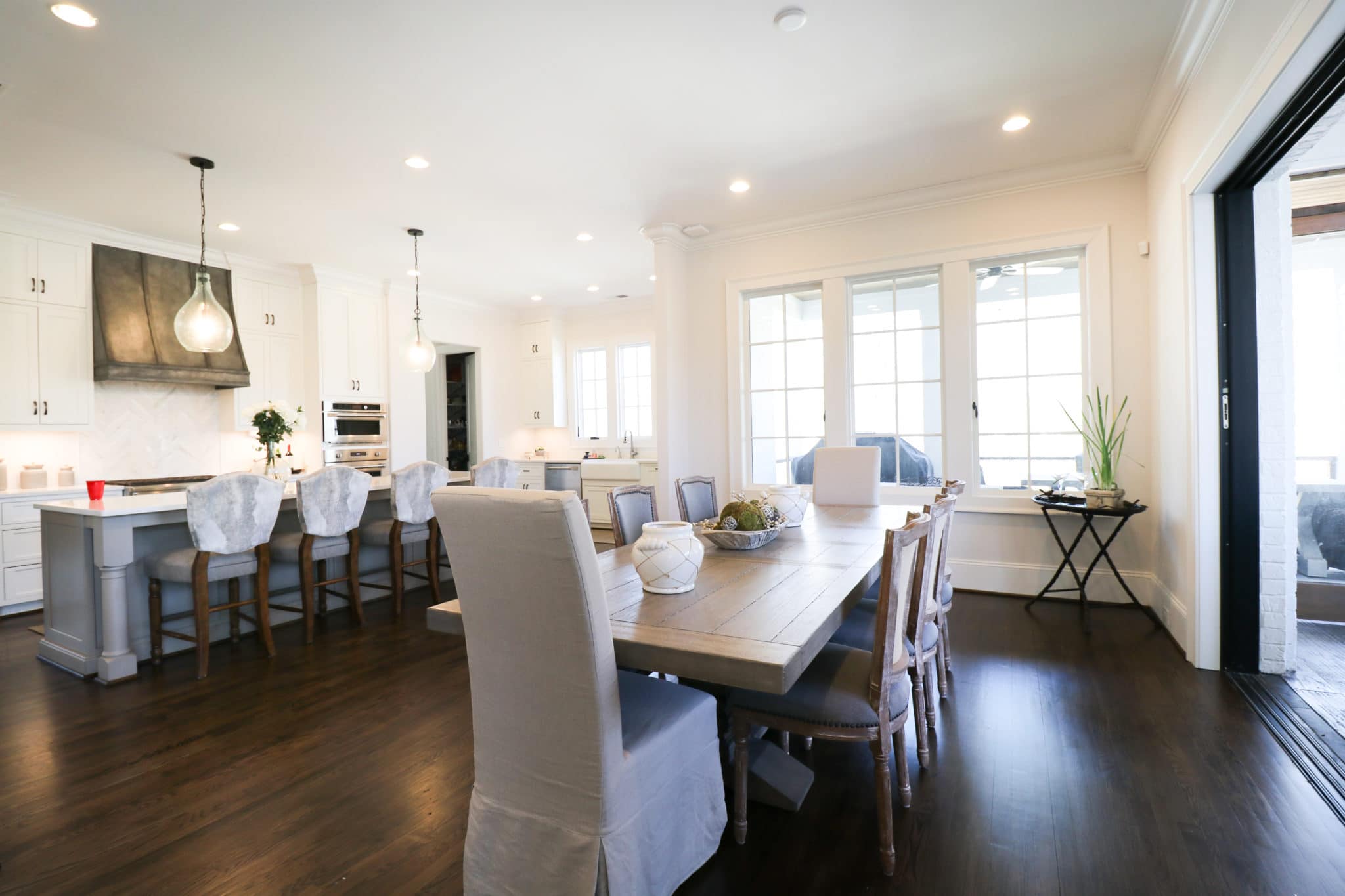LifeStyle
The Disappearing Dining Rooms: Exploring the Shift in Modern Home Design
Published
8 months agoon
By
Bilal
Dining rooms, once the heart of the home where families gathered daily to share meals and conversations, are slowly disappearing from modern homes. The traditional dining room, with its formal table and chairs, has become less of a necessity in recent years. This shift in interior design trends reflects changes in lifestyle, family dynamics, and the increasing need for multipurpose spaces. In this article, we’ll delve into the phenomenon of disappearing dining rooms, examine the factors driving this trend, and explore alternative solutions that modern households are adopting.
Biographical Table
| Title | Disappearing Dining Rooms |
|---|---|
| Focus Keyword | Disappearing Dining Rooms |
| Supported Keywords | Modern Home Design, Multi-Functional Spaces, Open Floor Plans, Casual Dining Trends, Kitchen Islands, Interior Design Trends, Traditional Dining Spaces, Dining Room Alternatives |
| Article Length | 1080 – 1850 Words |
| Primary Focus | Why traditional dining rooms are vanishing |
| Audience | Homeowners, interior design enthusiasts, and architects |
The Evolution of Home Design and the Decline of Traditional Dining Rooms
In past decades, the dining room held a place of honor in homes around the world. It was a formal, dedicated space reserved for meals, celebrations, and family gatherings. However, as home design has evolved to adapt to changing lifestyles, the once-essential dining room has lost its prominence. Today, many homeowners are choosing to forgo a separate dining area altogether, embracing open floor plans and multifunctional spaces instead.
Several factors contribute to the trend of disappearing dining rooms. First, lifestyle changes have led to less structured mealtimes. Busy schedules, varied working hours, and an increasing preference for casual dining mean that people are no longer sitting down for formal meals as often. Second, the rise of open-concept living has blurred the lines between kitchen, dining, and living spaces. This trend prioritizes a seamless flow between areas, allowing people to eat, socialize, and relax in a single, open space. Finally, space constraints in modern homes, particularly in urban areas, make it impractical to dedicate a room solely for dining.
The Impact of Open Floor Plans on the Disappearance of Dining Rooms

Open floor plans have become one of the most popular interior design trends of the last few decades. By removing walls that separate the kitchen, living, and dining areas, open floor plans create a large, continuous space that fosters interaction and visibility across different zones. This layout is especially appealing to families and social gatherings, where the host can prepare food in the kitchen while still engaging with guests in the living area.
The trend toward open floor plans has directly contributed to the decline of traditional dining rooms. In an open layout, the dining space is often combined with the kitchen or living area, making a separate dining room redundant. This integration allows for a more fluid, flexible space that can be used for multiple purposes beyond eating. Homeowners are now opting for a dining table within the kitchen area or a counter space with stools, which provides a casual and convenient setting for meals without the formality of a traditional dining room.
Multi-Functional Spaces: Making the Most of Limited Square Footage
As urbanization grows, space has become a premium commodity. With homes and apartments getting smaller, particularly in cities, there is a growing need to make every square foot count. Multi-functional spaces have become a solution for maximizing available space and creating a more adaptable living environment.
For instance, instead of a dedicated dining room, many modern homes now feature multi-purpose spaces that can serve as a dining area, office, or playroom, depending on the need. This flexibility is especially appealing for young families, professionals who work from home, or those who live in smaller apartments. A foldable or extendable dining table can easily be tucked away when not in use, freeing up space for other activities. Some households use the living room or kitchen as a dining area, reinforcing the trend of disappearing dining rooms.
The Rise of Kitchen Islands as Dining Alternatives

The kitchen island has emerged as a popular alternative to the traditional dining room. Offering both function and style, kitchen islands can serve as a workspace, a cooking area, and a casual dining space all at once. Many modern kitchen islands are designed with seating options, allowing them to double as a dining table. This solution is especially favored in open-concept homes, where family members can gather around the island for quick meals, morning coffee, or casual snacks.
Kitchen islands also contribute to the social aspect of cooking and dining. In the past, the cook was often isolated in a separate kitchen, away from family and guests. With an open-concept layout and a central kitchen island, the cooking process becomes a social activity, where everyone can participate and interact. This shift in design and lifestyle is another reason why traditional dining rooms are disappearing. Homeowners now prefer the casual dining setup of a kitchen island, which better fits their fast-paced, flexible lifestyles.
Casual Dining Trends: Moving Away from Formal Dining Spaces
Another reason behind the disappearing dining rooms is the shift toward casual dining trends. People today are more likely to eat meals on the go, at the kitchen counter, or in front of the television, rather than in a formal dining room. This trend reflects a broader change in how people approach meal times. Many families no longer adhere to the traditional three-meals-a-day routine, opting instead for flexible eating habits that fit around their busy schedules.
The modern family dining experience is less about formal sit-down meals and more about convenience and adaptability. For many, the idea of a formal dining room feels outdated and unnecessary. Instead, they prefer to use the space for something more practical, like a home office, play area, or media room. In essence, casual dining trends are transforming the way we use our homes, further accelerating the decline of the traditional dining room.
Dining Room Alternatives: Creative Solutions for Modern Homes
Although traditional dining rooms may be on the decline, homeowners are coming up with creative solutions to accommodate dining without a dedicated room. Here are some popular alternatives that reflect the shift in modern home design:
- Eat-In Kitchens: An eat-in kitchen is a practical and space-saving alternative to a separate dining room. By incorporating a dining area within the kitchen, homeowners can maintain a designated space for meals without sacrificing additional square footage.
- Dining Nooks: Dining nooks, often set against a wall or window, provide a cozy space for meals without taking up an entire room. They can be designed with built-in seating or a small table, making them ideal for families with limited space.
- Convertible Dining Spaces: In homes where flexibility is essential, a convertible dining space can serve multiple functions. A foldable dining table, for instance, can be expanded for meals and then tucked away or used as a desk when needed.
- Outdoor Dining Areas: For those with access to a backyard, patio, or balcony, an outdoor dining area can be an excellent substitute for a traditional dining room. Outdoor dining spaces offer a relaxed, open environment for meals, especially during warm weather.
- Living Room Dining Combinations: Some homeowners opt to place a dining table within the living room, creating a combined living and dining area. This setup is especially popular in open-concept homes, where the living room and dining area naturally flow into one another.
Why Are Traditional Dining Rooms Becoming Less Common?
The disappearance of traditional dining rooms reflects a broader trend toward flexibility, casual living, and efficient use of space. Families today prioritize practicality over formality, and as a result, the need for a dedicated dining room has diminished. Open floor plans, kitchen islands, and multifunctional spaces provide the flexibility and efficiency that modern lifestyles demand.
Moreover, the change is also influenced by economic factors. Building a home with a dedicated dining room adds to the cost of construction, heating, and maintenance. By eliminating this room, homeowners can save money while creating a home that better suits their lifestyle. The emphasis on smaller, smarter homes is another reason why dining rooms are disappearing in contemporary architecture.
The Future of Dining Rooms in Interior Design
As the trend of disappearing dining rooms continues, it’s worth considering what the future holds for this once-essential space. While it’s unlikely that formal dining rooms will disappear entirely, their role in the home is undoubtedly evolving. For some, the dining room will continue to serve as a place for special occasions and holiday gatherings. For others, it may transform into a multipurpose space that accommodates work, play, and other activities alongside dining.
Architects and designers are increasingly focused on creating adaptable spaces that can evolve with the needs of homeowners. Instead of a rigid layout, future homes may prioritize modular, customizable spaces that can be reconfigured to meet changing demands. This flexibility will allow homeowners to choose whether or not they want a traditional dining room, depending on their lifestyle and preferences.
Conclusion
The trend of disappearing dining rooms highlights a significant shift in how we live, eat, and interact in our homes. As lifestyles evolve, so do the spaces we inhabit. The dining room, once a staple of family life, is becoming less common in favor of open layouts, kitchen islands, and flexible dining solutions. This change reflects a broader trend toward informal, multipurpose spaces that align with modern living.
For More Information: Lvtimes

Who Is Cruz Beckham? The Singer and Style Icon Emerging from David Beckham’s Famous Family

Who Is Kendall Schmidt? Inside the Life of the American Singer-Songwriter and Music Producer

Who Is Wendell James? Spotlight on the Actor’s

Who Is Elizabeth Rizzini? Inside the BBC Weather Presenter’s Life, Career, and Personal Journey

Who Is Mason Reese? All About the American Former Child Actor’s

Who Is Lynn Hamilton? Celebrating the Life and Legacy of the American Actress

Who is Mickey Gooch Jr? The Dynamic Journey of a Film Producer and Actor

Who Is Pierre Bouvier? All About the Canadian Singer and Musician Behind Simple Plan

Who Is Pearl Minnie Anderson? Rising Star in Maya Rudolph’s Legacy

Who is Minnie Pearl? The American Comedian Who Brought Country Humor to the Spotlight

Who Is Diana Espinoza Aguilar? The Story of Rafael Caro Quintero’s Wife

Who Is James Lesure? All About the American Film and Television Actor

Who is Eric Weinberger? A Visionary Television Producer Shaping Sports Media

Who is Charlee Fraser? The Rise of the Australian Model and Actress Making Global Waves

Who Is Avantika Vandanapu? Rising American Actress & Singer

Who Is Kavan Smith? The Canadian Actor Known for His Versatile Roles

Who is Tracey Hinds? Exploring the Life of Macy Gray’s Ex-Husband and Mortgage Broker

Who is Olivia Rose Cameron: The Creative Artist & Daughter of Kirk Cameron

Who Is Pearl Minnie Anderson? Rising Star in Maya Rudolph’s Legacy

Who Is Pierre Bouvier? All About the Canadian Singer and Musician Behind Simple Plan

Who Is Cruz Beckham? The Singer and Style Icon Emerging from David Beckham’s Famous Family

Who Is Kendall Schmidt? Inside the Life of the American Singer-Songwriter and Music Producer

Who Is Wendell James? Spotlight on the Actor’s

Who Is Elizabeth Rizzini? Inside the BBC Weather Presenter’s Life, Career, and Personal Journey

Who Is Mason Reese? All About the American Former Child Actor’s

Who Is Lynn Hamilton? Celebrating the Life and Legacy of the American Actress

Who is Mickey Gooch Jr? The Dynamic Journey of a Film Producer and Actor

Who Is Pierre Bouvier? All About the Canadian Singer and Musician Behind Simple Plan

Who Is Pearl Minnie Anderson? Rising Star in Maya Rudolph’s Legacy

Who is Minnie Pearl? The American Comedian Who Brought Country Humor to the Spotlight
Trending
-

 Celebrity12 months ago
Celebrity12 months agoNecati Arabacı: Net Worth, Biography, and More
-

 Celebrity1 year ago
Celebrity1 year agoDiscovering Lily Phillips: An Insight into Her Life and Career
-

 Celebrity12 months ago
Celebrity12 months agoEnrica Cenzatti: Life of Andrea Bocelli’s Ex-Wife
-

 Celebrity1 year ago
Celebrity1 year agoParker Schnabel’s Girlfriend: A Comprehensive Look at His Relationships Over the Years
